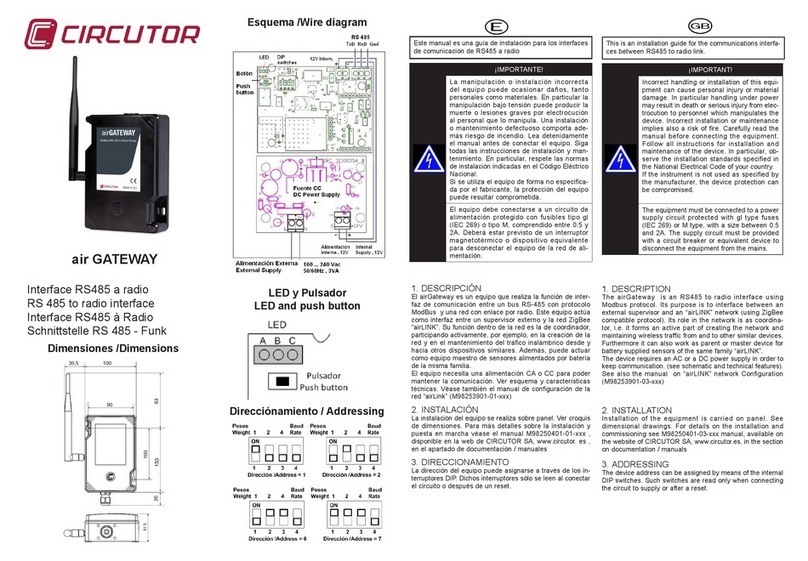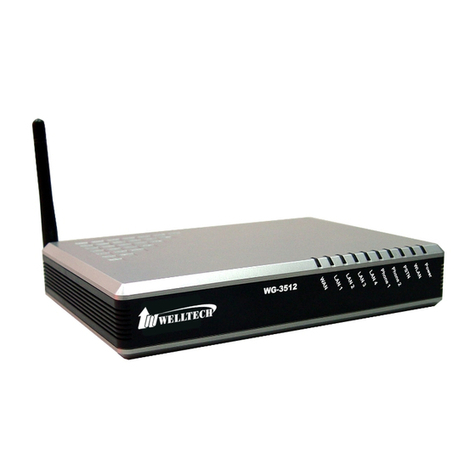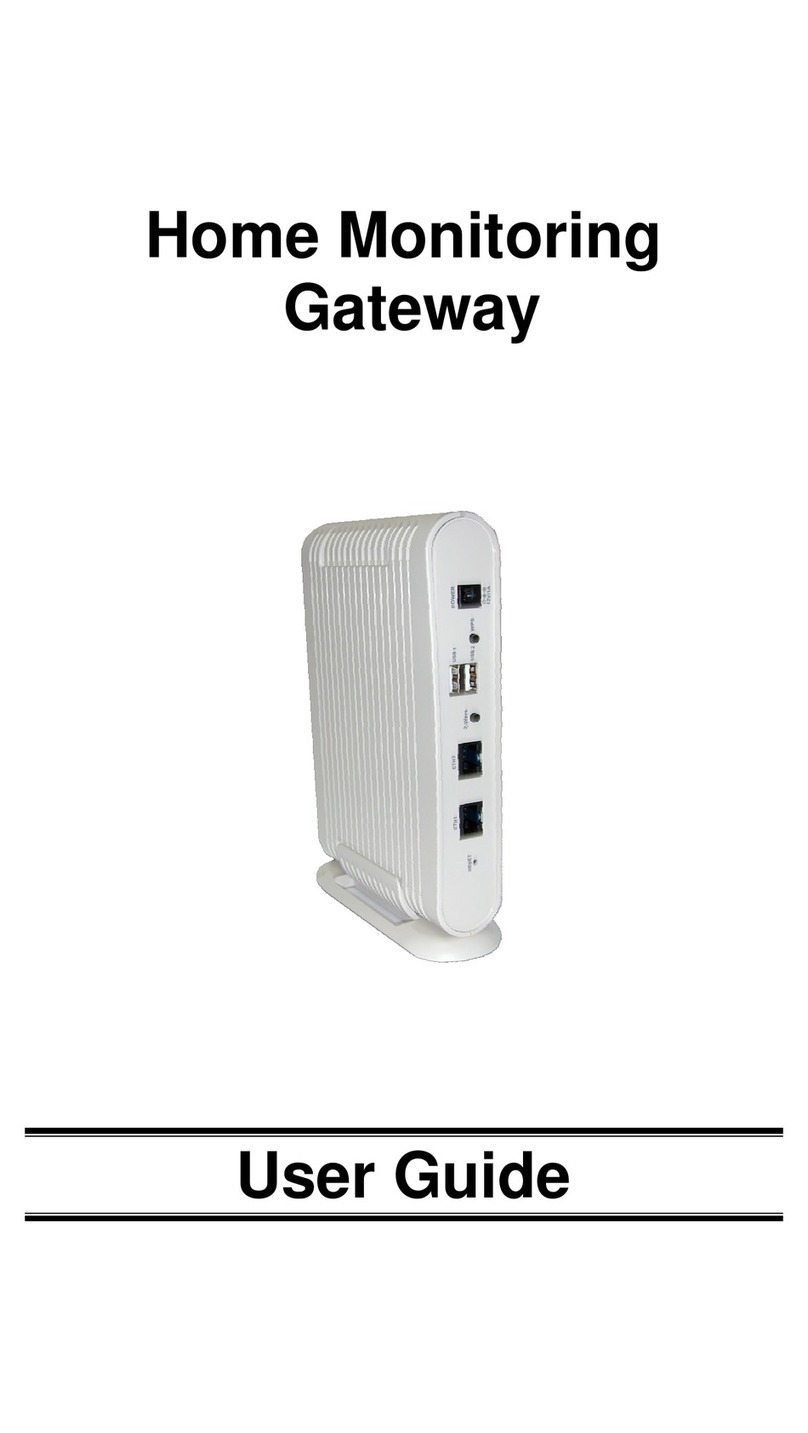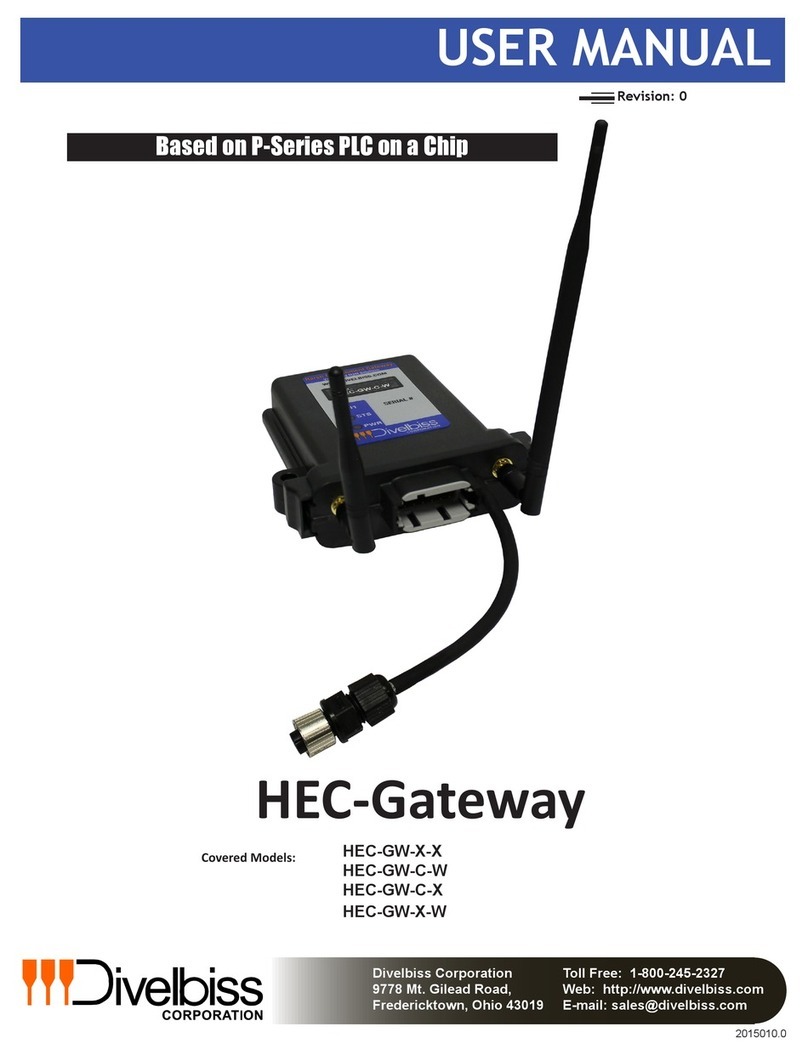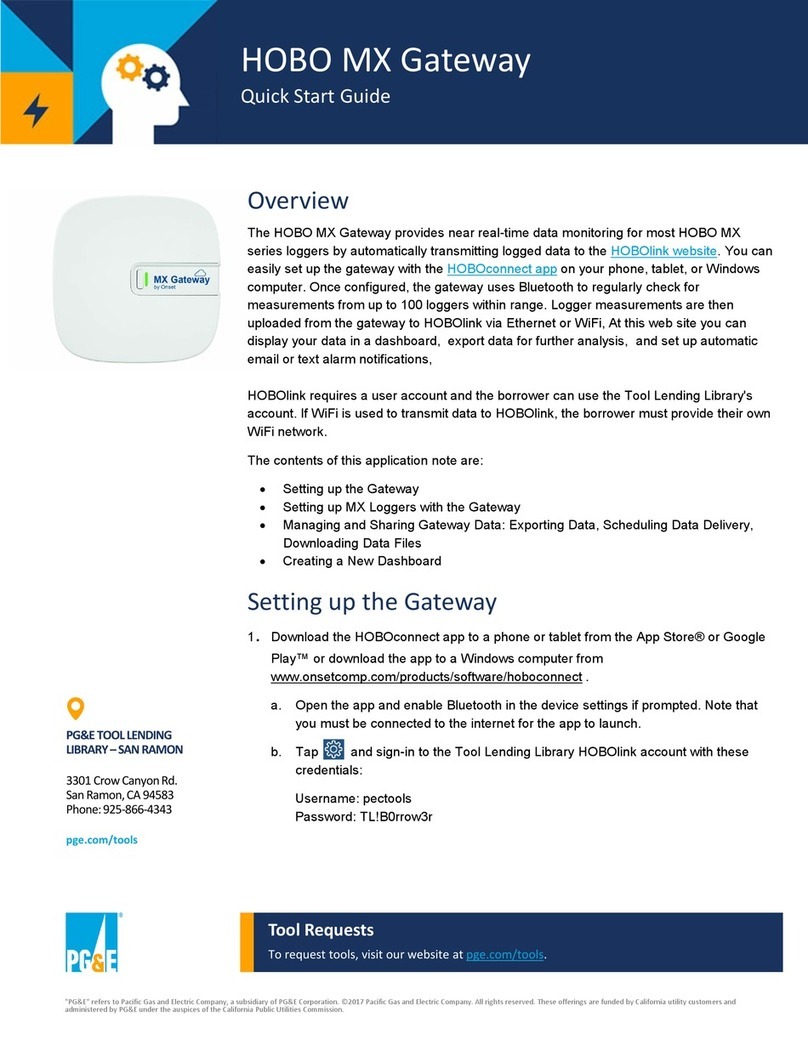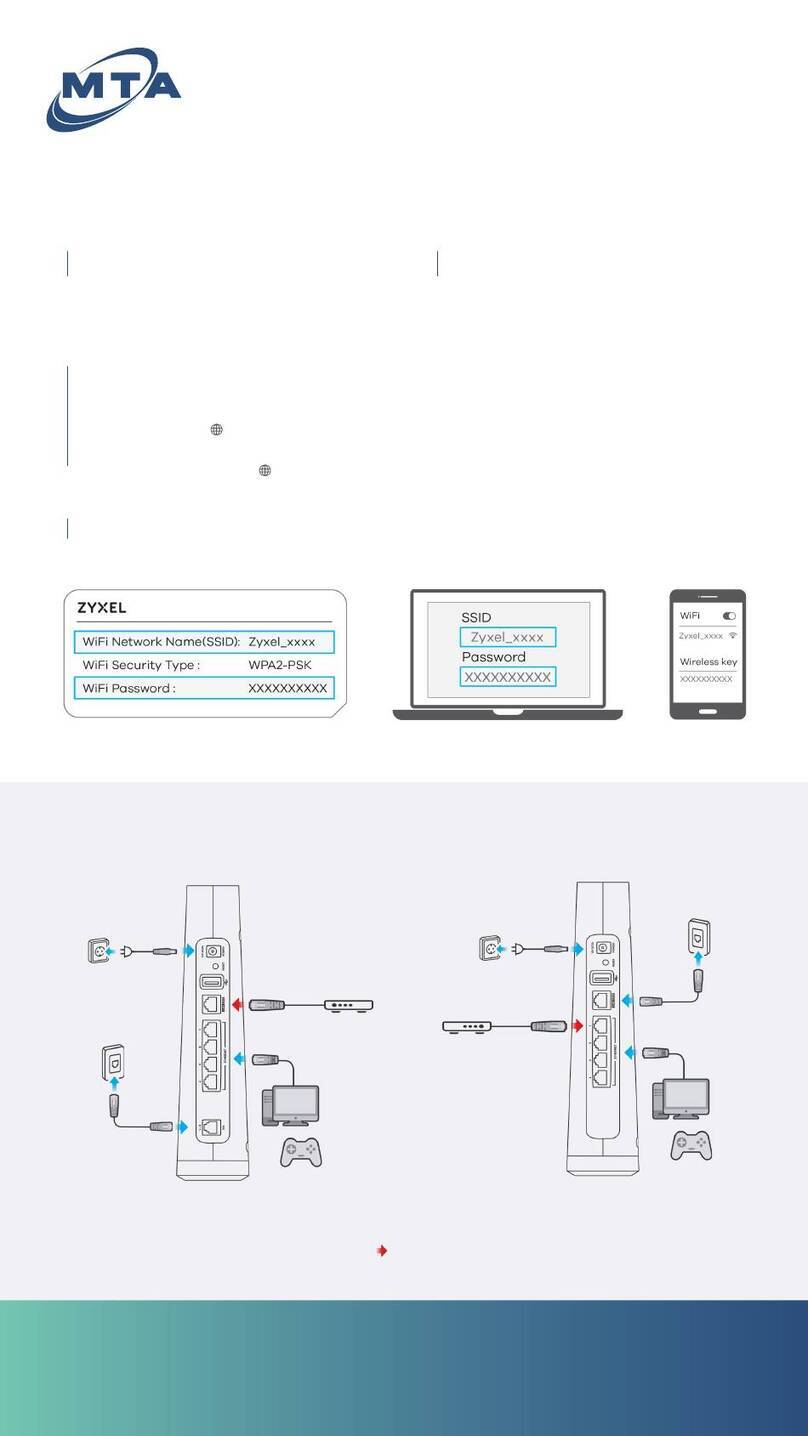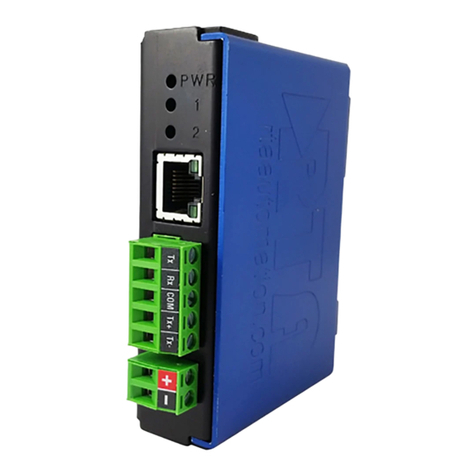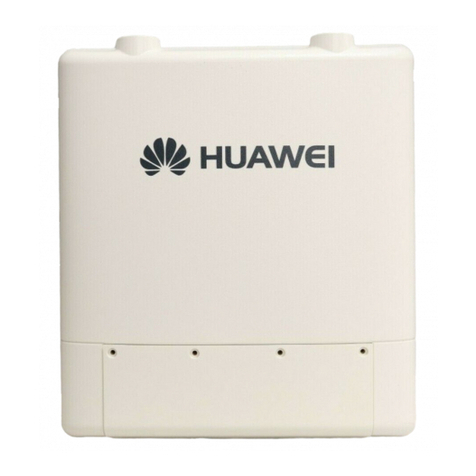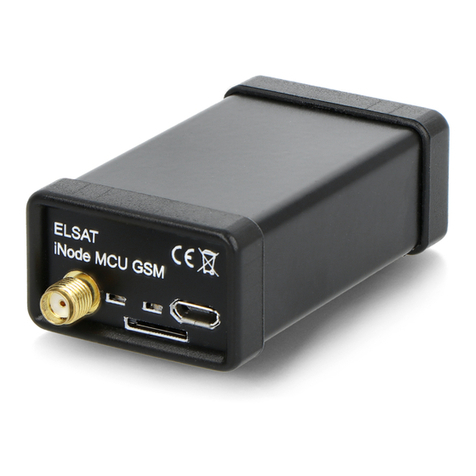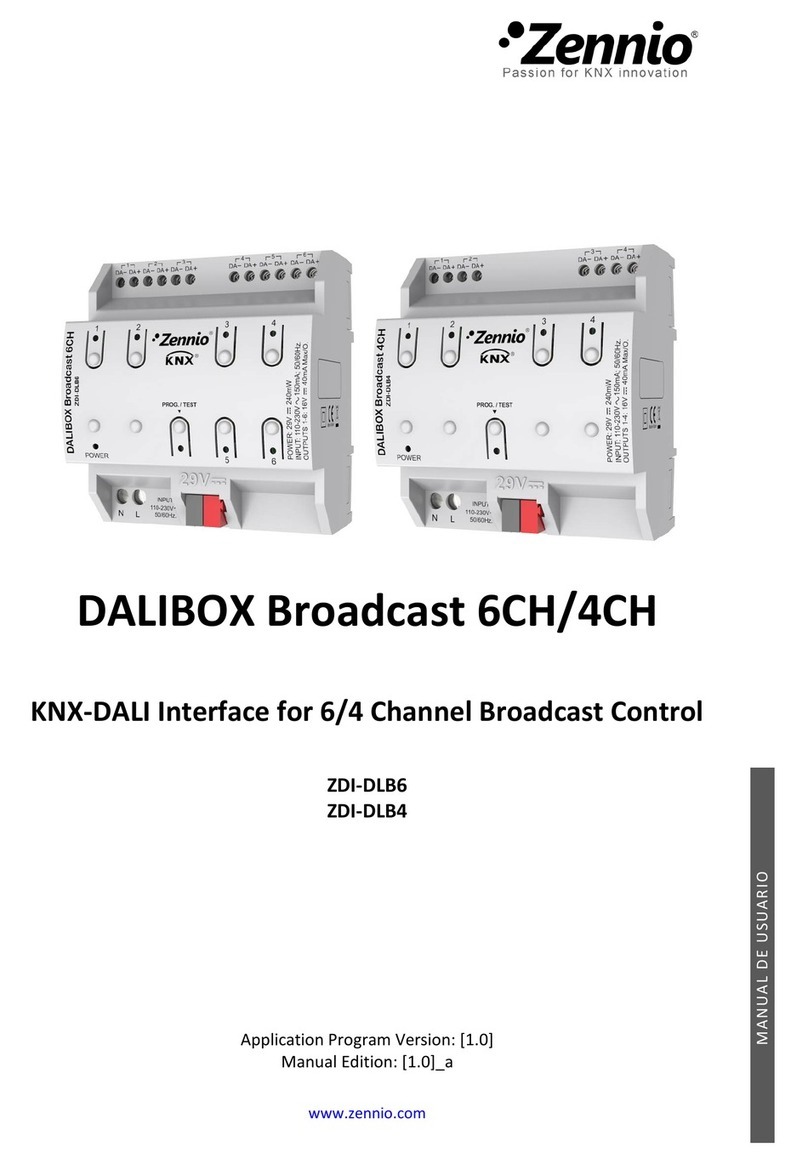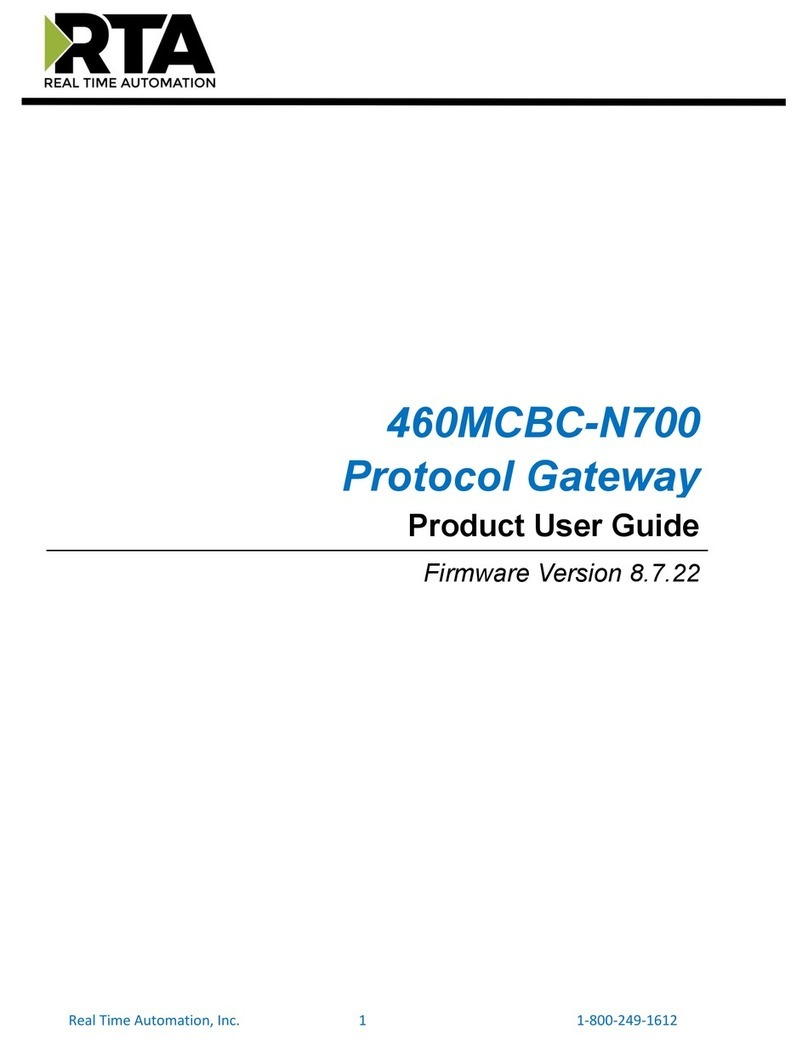DeviceNet SBPC-20-DN User manual

Figure Sheet 1-823-A 11-01-2001
Copyright
©
2000 Fife Corporation. All rights reserved.
Fife Corporation
P.O. Box 26508, Oklahoma City, OK 73126, U.S.A.
Phone: 405.755.1600 / Fax: 405.755.8425
SBPC-20-DN
FifeNet To DeviceNet Gateway
Customer Instruction Manual

Figure Sheet 1-823-A 11-01-2001

Figure Sheet 1-823-A 11-01-2001
i
•
•
•
•
•
•
SBPC-20-DN CUSTOMER INSTRUCTION MANUAL
••••••
C
OPYRIGHT
Copyright ©
All rights reserved. Any reproduction of this Instruction Manual, in any form, in whole or
in part, requires the prior written consent of FIFE CORPORATION.
The information given in this Instruction Manual is subject to change without notice.
We have compiled this Instruction Manual with the greatest possible care and attention:
however, the possibility of error can not be completely excluded. FIFE CORPORATION
accepts no legal liability for incorrect information given and the consequences arising
therefrom.
Copyright © 2001 Fife Corporation, All rights reserved.
P.O. Box 26508, Oklahoma City, OK 73126, U.S.A.

ii
Figure Sheet 1-823-A 11-01-2001
•
•
•
•
•
•

Figure Sheet 1-823-A 11-01-2001
iii
•
•
•
•
•
•
SBPC-20-DN CUSTOMER INSTRUCTION MANUAL
••••••
T
ABLE
O
F
C
ONTENTS
GENERAL INFORMATION Section 1
Introduction .....................................................................................................
1-1
Producer/Consumer Model....................................................................................
1-1
FifeNet ...........................................................................................................
1-1
SBPC-20-DN Switch/Jumper Configuration .................................................................
1-2
SBPC-20-DN External Connections/Indicators..............................................................
1-3
SBPC-20-DN Network Status ..................................................................................
1-4
SBPC-20-DN Error Codes.......................................................................................
1-5
FIFENET THEORY Section 2
FifeNet Timeslices .............................................................................................
2-1
Multiplexed Timeslices .............................................................................
2-1
thru
2-2
FifeNet Master ..................................................................................................
2-2
SBPC-20-DN Data Flow.........................................................................................
2-2
CONFIGURATIONS Section 3
Hardware Configuration-Single CDP-01 .....................................................................
3-1
Hardware Configuration-Multiple CDP-01 ..................................................................
3-2
Software Configuration........................................................................................
3-2
Electronic Data Sheet..........................................................................................
3-2
COMMUNICATION MAPPING Section 4
DeviceNet to FifeNet Data ....................................................................................
4-1
FifeNet to DeviceNet Data ....................................................................................
4-2
Single-Drive CDP-01 ............................................................................................
4-2
Dual-Drive CDP-01..............................................................................................
4-3
Triple-Drive CDP-01 ............................................................................................
4-4
CONTROL INFORMATION Section 5
CDP-01 Control Matrix .........................................................................................
5-1
External Lock ...................................................................................................
5-1
Single-Drive CDP-01 ............................................................................................
5-1
Dual-Drive CDP-01..............................................................................................
5-2
Triple-Drive CDP-01 ............................................................................................
5-3
Status Data Block....................................................................................
5-4
thru
5-9
SPECIAL CONTROL OF FIFENET DEVICES Section 6
The CDP-01 Key Code Data Path .............................................................................
6-1
The CDP-01 Key Codes.........................................................................................
6-2
Simulating Dual Key Presses ..................................................................................
6-2
The CDP-01 LED Panel Data...................................................................................
6-3
INDEX
Figure Sheet 1-823 Index................................................................
Index-1
thru
Index-2

iv
Figure Sheet 1-823-A 11-01-2001
•
•
•
•
•
•

Figure Sheet 1-823-A 11-01-2001
1
-
1
•
•
•
•
•
•
SBPC-20-DN CUSTOMER INSTRUCTION MANUAL
1
••••••
G
ENERAL
I
NFORMATION
Introduction
The Fife SBPC-20-DN (Serial Bus Protocol Converter) provides a gateway between Fife’s proprietary FifeNet network
and DeviceNet™. Using the SBPC-20-DN, data originating from FifeNet can be sent on DeviceNet, and data from
DeviceNet can be sent to FifeNet. As shown in the diagram below, the SBPC-20-DN connects to both FifeNet and
DeviceNet.
Producer/Consumer Model
The Producer/Consumer model allows the exchange of information between a sending device (“the producer”) and
many receiving devices (“the consumers”) without requiring the same data to be sent multiple times to different
destinations. The producer sends the data once, and each consumer on the network receives the data at the same
time. The data can be used (“consumed”) or ignored by each receiving device independently. DeviceNet and FifeNet
both use the Producer/Consumer Model.
FifeNet
FifeNet’s deployment of the Producer/Consumer Model allows data sent by a single device to be received
simultaneously by multiple devices on the same network. Each receiving device can choose to use (“consume”) the
information or ignore it as its needs dictate. FifeNet is based on a fixed time slicing architecture where transmitting
devices send data in fixed predetermined time intervals.
Example of an SBPC-20-DN Network Connection
FifeNet
Figure 1-1
The SBPC-20-DN
connects to both
FifeNet and DeviceNet
providing translation
between the two
networks.

1
-
2
Figure Sheet 1-823-A 11-01-2001
•
•
•
•
•
•
SBPC-20-DN CUSTOMER INSTRUCTION MANUAL
SBPC-20-DN Switch/Jumper Configuration
Since the SBPC-20-DN participates in two networks at the same time, it must have two network addresses (a FifeNet
address and a DeviceNet node address). The FifeNet address is set via the FifeNet serial port, which is common with
many FifeNet peripherals. The DeviceNet node address must be programmable by the customer so it is set using the
rotary switches shown below. These switches are read in decimal from left to right. If the SBPC-20-DN is installed
as the end point in a FifeNet network, jumpers 1 and 2 should be installed to provide network termination. The
available DeviceNet baud rates are 125k, 250k, and 500k baud.
SBPC-20-DN Top View
Figure 1-2
These four LEDS provide error
messages when appropriate.
During normal operation they
flash dimly depending on what
is happening. The least
significant bit is on the right.
The DeviceNet baud
rate is set using the
2-position "DR" (Data
Rate) switch. Available
baud rates are:
These jumpers should
be installed if the
SBPC-20 is at the end
of a FifeNet network.
They provide network
termination.
The DeviceNet node
address is set by these
rotary switches. The
most significant digit
is on the left. Valid
addresses are 1—63.
DEVICENET POWER SETTINGS
1-2 Internal—default (3-wire, nonpowered network )
2-3 External (5-wire, powered network )
125K 250K 500K
DR
1
DR
1
DR
1

Figure Sheet 1-823-A 11-01-2001
1
-
3
•
•
•
•
•
•
SBPC-20-DN CUSTOMER INSTRUCTION MANUAL
SBPC-20-DN External Connections/Indicators
SBPC-20-DN mounting considerations are simplified as all connections to the SBPC-20-DN are on the same side of
the box.
DEVICENET
MODULE
NETWORK
STATUS
FIFENET
SBPC-20-DN Side View
Figure 1-3
DeviceNet network status
LEDS. These indicators
provide feedback for network
troubleshooting in accordance
with DeviceNet specifications.
Connection to FifeNet
is accomplished using
the standard FifeNet
connector. Configuration
is also downloaded to
the device using this
connection.
This is the DeviceNet
network connection.
It uses a 5-pin sealed
micro connector.
CONNECTOR
PIN-OUT
1— SHIELD
2— V+
3— V–
4— CANH
5— CANL
DeviceNet
Color Code
Bare
Red
Black
White
Blue
5
4
3
1
2
Female Socket

1
-
4
Figure Sheet 1-823-A 11-01-2001
•
•
•
•
•
•
SBPC-20-DN CUSTOMER INSTRUCTION MANUAL
SBPC-20-DN Network Status
The SBPC-20-DN network status is determined by interpretation of the external LED status indicators as described
in the table below.
Table 1-1
UCS STATUS
LED State
Meaning
Off
No power.
Solid Red
Hardware error.
Flashing Red
Recoverable configuration fault. (Invalid firmware, OEM data, or personality block.)
Flashing Green
No errors, interface closed.
Solid Green
No errors, interface open.
Amber
Module is in configuration mode.
NET STATUS
LED State
Meaning
Off
Network interface offline/No network power.
Solid Red
Unrecoverable fault.
Flashing Red
I/O connections(s) in timed-out state or other unrecoverable fault.
Flashing Green
Device is online but has no running connections.
Soild Green
Online with established connections.
Flashing
Green/Red
Device is in communication faulted state and responding to an “Identify Communication Faulted”
request.
Figure 1-4
SBPC-20-DN LED Indicators
UCS Status
Net Status
MODULE
NETWORK
STATUS

Figure Sheet 1-823-A 11-01-2001
1
-
5
•
•
•
•
•
•
SBPC-20-DN CUSTOMER INSTRUCTION MANUAL
SBPC-20-DN Error Codes
The four LEDS mounted on the SBPC-20-DN main board are used to indicate errors or other potential problems. See
page 1-2 of this manual for the location of these LED’s. The error codes are divided into the categories listed below.
Since there are only four LEDS, the error codes are displayed in two parts. The most significant 4-bits of the code
will blink at a slow rate (250ms) 3 times. The least significant 4-bits will blink at a fast rate (100ms) 3 times. The
cycle repeats unless the SBPC-20-DN has been configured to attempt to restart after an error. If this is the case, the
error will only cycle once. Here are the valid error codes.
Table 1-2
CODE
SBPC PROCESSOR ERRORS
0xF1
FLASH checksum failure.
0xF2
EEPROM checksum failure.
UCS MODULE FATAL ERRORS
0x01
UCS module reported HARDWARE_ERROR.
0x02
UCS module reported CONFIG_MODE.
0x04
UCS module reported STARTUP_ERROR.
0x05
UCS module reported ASSERT error.
0x06
UCS module reported ABORT error.
0x07
UCS module reported KERNEL error.
0x08
UCS module reported WATCHDOG timeout.
0x09
Unreported watchdog timeout (fatal hardware problem).
0x0A
Invalid module status STATUS.
0x0B
UCS module ID number unrecognized.
STARTUP ERRORS & HARDWARE-RELATED FAULTS
0x11
UCS module is not present.
0x12
UCS MACID is zero. (Illegal address)
0x13
Module did not start (timeout waiting for initial interrupt).
0x14
Parity error detected in client parallel interface.
0x15
UCS module detected a bus fault.
0x16
Unresolved hardware interrupt (interrupt flag not set).
0x17
BUSY timeout.
0x18
Unresolved bus fault signal (fault flag not set).
0x19
Invalid baud rate switch setting.
MODULE COMPATIBILITY FAULTS
0x21
ID block major rev mismatch.
0x22
ID block minor rev mismatch.
0x23
Control/status block major rev mismatch.
0x24
Control/status block minor rev mismatch.
RUNTIME ERRORS
0x31
Open interface response timeout.
0x32
Heartbeat response timeout.
0x33
UCS module reported heartbeat timeout.
0x34
Invalid TRIGGER_OUT pointer.
0x35
Invalid TRIGGER_IN pointer.
0x36
Trigger queue is full.
0x37
Invalid EVENT_OUT pointer.
0x38
Invalid EVENT_IN pointer.
0x39
TRIGGER_ERROR event received.
0x3A
Invalid event received.
0x3B
Unexpected event received.

1
-
6
Figure Sheet 1-823-A 11-01-2001
•
•
•
•
•
•

Figure Sheet 1-823-A 11-01-2001
2
-
1
•
•
•
•
•
•
SBPC-20-DN CUSTOMER INSTRUCTION MANUAL
2
••••••
F
IFE
N
ET
T
HEORY
FifeNet Timeslices
Data on FifeNet is divided into time intervals called timeslices. The FifeNet protocol runs in fixed repeating cycles.
Each time slice can transmit a single 16-bit value. All time slice values are updated every cycle.
Multiplexed Timeslices
FifeNet devices can send a single 16-bit value in one or more time slices. This is acceptable for values that require
high performance such as guiding. The penalty for this performance is the usage of one time slice per value sent.
With limited time slices available, network bandwidth can be consumed quickly. If some variables are not needed
at a high rate, FifeNet offers a way to “multiplex” a single time slice to carry multiple data words.There are two
multiplex options available in the CDP-01 that permits a single time slice to carry 16 words or 64 words. Multiplexing
works by inserting the specified data words in a sequential repeating cycle. The receiving SBPC-20-DN synchronizes
with the multiplexed data to extract it. This method trades data update speed for higher data quantities (up to 64
words per time slice). Any combination of real time or multiplexed data can exist on FifeNet.
In the example diagram Figure 2-1, there is real time data on D1 and multiplexed 16 data words on D5. D1 contains
the Edge Left sensor value from a CDP-01. D5 is used to send 16 different values from the CDP-01. For the real time
value, the CDP-01 sends the Edge Left sensor value in D1 every cycle. For the multiplexed time slice, the CDP-01
sends the Edge Right sensor value in D5 during time T0. During time T1, D5 contains the Line Edge sensor value.
Multiplexed Data Timeslices
Figure 2-1
MULTIPLEXING
D5 is multiplex or switched
to a different variable every
cycle. After the last variable
is sent, the process repeats
continuously.
D1 ACTIVITY
D1 is real time. This data is
updated every cycle.
D5 ACTIVITY
Tn D5 Contents
T0 - EdgeRight Sensor
T1 - LineEdge Sensor
T2 - CDP key pressed
T3 - Status Register Common
T4 - Drive 1 Mode
T5 - Drive 1 Sensor Mode
T6 - Drive 1 Encoder
T7 - Drive 1 Status Reg 0
T8 - Drive 2 Mode
T9 - Drive 2 Sensor Mode
T10 - Drive 2 Encoder
T11 - Drive 2 Status Reg 0
T12 - Drive 3 Mode
T13 - Drive 3 Sensor Mode
T14 - Drive 3 Encoder
T15 - Drive 3 Status Reg 0
D1 D5
T0
D1 D5
T1
D1 D5
T2
D1 D5
T3...

2
-
2
Figure Sheet 1-823-A 11-01-2001
•
•
•
•
•
•
SBPC-20-DN CUSTOMER INSTRUCTION MANUAL
As you can see in the example on the previous page, 17 values are being sent over FifeNet but only two time slices
of network bandwidth are used. The 16 values in time slice 5 are updated at a slower rate than the value in time
slice 1. The application dictates which method should be implemented.
FifeNet Master
The FifeNet protocol uses the time slice architecture described previously for configurable network traffic. Without
some synchronization however, neither the SBPC-20-DN or the CDP-01 would know where the time slice boundaries
were located. This would create problems when they are trying to send and receive data. This is one of the primary
functions of the FifeNet Master, in this case that would be the SBPC-20-DN.
SBPC-20-DN Data Flow
In order to effectively connect two dissimilar networks, some means must be provided to collect the data from
each network and exchange it in a controlled manner so that no partial or incomplete data is sent on either network.
This is accomplished by using a block of memory in the SBPC-20-DN to reassemble FifeNet time slice data and then
when it is complete, transfer it to the DeviceNet buffers for transmission on DeviceNet. Keep in mind that the
gateway has to be bi-directional so this process works the same way for data traveling from DeviceNet to FifeNet.
The diagram below shows the process.
As you can see in Figure 2-2, each time slice has enough memory to store 64 16-bit data words. This is the maximum
amount of data that appears on a FifeNet multiplexed time slice. These data words are referenced by their order of
reception in the multiplexed sequence with DW0 being first and DW63 being last. When the time slice is used in the
real time mode, only the first location DW0 in the memory array is used. Multiplexed modes 4, 8, and 16 each use
4, 8, and 16 words of memory respectively.
Figure 2-2
This Matrix is
used to connect
any time slice
buffer to any
memory buffer
location.
The time slice
buffers hold
the raw time
slice data.
This Matrix is
used to connect
DeviceNet
data to any
memory buffer
location.
The memory
array is used to
assemble and
hold data passing
through the
gateway.
DeviceNet
data is
placed here for
transmission.
Consumed data
is read from
here and sent
to FifeNet.
D1
D2
.
.
.
.
.
.
.
.
.
D3
FifeNet
Data
M
A
T
R
I
X
M
A
T
R
I
X
.
.
.
.
.
.
.
SBPC-20-DN Data Flow Block Diagram
DW0
D1
DW1
DW2
DW3
DW4
DW5
DW6
DW7
DW8
DW9
DW61
DW62
DW63
D2
D3

Figure Sheet 1-823-A 11-01-2001
3
-
1
•
•
•
•
•
•
SBPC-20-DN CUSTOMER INSTRUCTION MANUAL
3
••••••
C
ONFIGURATIONS
Hardware Configuration-Single CDP-01
The SBPC-20-DN connection diagram is shown below. As you can see, this allows a single CDP-01 at FifeNet address
1 and an SBPC-20-DN at address 10. The SBPC-20-DN default DeviceNet node address is 2 but can be easily changed
using the rotary switches in the SBPC-20-DN. The DeviceNet network depends on the customer.
SBPC-20-DN Network Connection With Single CDP-01
FifeNet
Figure 3-1
DeviceNet Node
Address 2
FifeNet Master
Address 10
FifeNet
Address 1
SBPC-20-DN to CDP-01 Cabl
e
Fife PN: 67075-001

3
-
2
Figure Sheet 1-823-A 11-01-2001
•
•
•
•
•
•
SBPC-20-DN CUSTOMER INSTRUCTION MANUAL
Hardware Configuration-Multiple CDP-01
In the network below, the default SBPC-20-DN configuration is used multiple times to provide control to multiple
CDP-01’s. Each SBPC-20-DN is connected to a single CDP-01 creating a separate FifeNet network for each CDP-01.
Each SBPC-20-DN appears as both a FifeNet node and a DeviceNet node. Notice the SBPC-20-DN DeviceNet address
must be different for each SBPC-20-DN. The DeviceNet address is set by rotary switches inside the enclosure.
Software Configuration
Configurations have been created to match the single CDP-01 network shown in Figure 3-1. Since the CDP-01 can
have one, two, or three drives, a configuration has been created to match the parameters present in each drive
configuration. This prevents inefficient use of DeviceNet bandwidth for data that is inapplicable. The three
configurations are:
Electronic Data Sheet
An Electronic Data Sheet (EDS) file is provided with every SBPC-20-DN. Use this file when adding a new DeviceNet
node to the network, and it will automatically set up the configuration for that network node.
Table 3-1
CONFIGURATION SBPC-20-DN
MATRIX
CDP-01
MATRIX
SBPC-20-DN Default Matrix for use with Single-drive CDP-01 100406-02X 100246-02X
SBPC-20-DN Default Matrix for use with Dual-drive CDP-01 100407-02X 100247-02X
SBPC-20-DN Default Matrix for use with Triple-drive CDP-01 100408-02X 100248-02X
SBPC-20-DN Network Connection With Multiple CDP-01
FifeNet
Figure 3-2
DeviceNet
Address 3
FifeNet Master
Address 10
FifeNet
Address 1
SBPC-20-DN to
CDP-01 Cable
Fife PN: 67075-001
FifeNet
DeviceNet
A
ddress 2
FifeNet Master
Address 10
FifeNet
Address 1

Figure Sheet 1-823-A 11-01-2001
4
-
1
•
•
•
•
•
•
SBPC-20-DN CUSTOMER INSTRUCTION MANUAL
4
••••••
C
OMMUNICATION
M
APPING
DeviceNet to FifeNet Data
In each of the three configurations, (Single, Dual or Triple drive CDP-01) the DeviceNet to FifeNet data is the same.
The table below shows the configuration mapping for data traveling from DeviceNet to FifeNet. The control matrix
data on data word 4 is present so that if it is mapped to the parallel input for the CDP-01, a great deal of control
can be exercised without a special state machine in the CDP-01. If this control is insufficient, the data capabilities
on data word 2 through data word 6 provide for custom applications using state machine interpretation.
1
= All data words are 16 bits.
2
= Data Types:
* INT 16-bit signed value in the range of –32768 to +32767.
* WORD 16-bit unsigned value in the range of 0 to 65535.
* DWORD 32-bit unsigned value in the range of 0 to 4294967295.
3
= Commands to the CDP-01.
Table 4-1
DEVICENET TO FIFENET DATA
—
SINGLE, DUAL & TRIPLE DRIVE
CDP-01 Matrix: 100246-02X Single,
100247-02X Dual,
100248-02X Triple
SBPC-20-DN Matrix: 100406-02X Single,
100407-02X Dual,
100408-02X Triple
DeviceNet
Scheduled Data
Word Source
1
Data
Type
2
Variable Description
0
WORD Device 1
Command
3
Network commands sent to the CDP-01.
Simulated key presses, etc.
1
WORD Control Matrix Used to control the CDP-01 in accordance
with the control matrix.
2
WORD [0] Reserved These values are reserved for state machine
communication.
3
WORD [1] Reserved
4
WORD [2] Reserved
5
INT [3] Reserved
6
INT [4] Reserved

4
-
2
Figure Sheet 1-823-A 11-01-2001
•
•
•
•
•
•
SBPC-20-DN CUSTOMER INSTRUCTION MANUAL
FifeNet to DeviceNet Data
The following Single-Drive, Dual-Drive, and Triple-Drive Tables show the default configuration mapping for data
traveling from FifeNet to DeviceNet.
Single-Drive CDP-01
1
= All data words are 16 bits.
2
= Data Types:
* INT 16-bit signed value in the range of –32768 to +32767.
* WORD 16-bit unsigned value in the range of 0 to 65535.
* DWORD 32-bit unsigned value in the range of 0 to 4294967295.
3
= This is the device response from the CDP-01.
Table 4-2
FIFENET TO DEVICENET DATA
—
SINGLE-DRIVE
CDP-01 Matrix: 100246-02X SBPC-20-DN Matrix: 100406-02X
DeviceNet
Scheduled
Data Word
Destination
1
Data
Type
2
Variable Description
0
WORD Reserved Reserved.
1
2
DWORD Reserved Reserved.
3
4
DWORD Panel Data 0
Panel Data 1
CDP-01 LED panel data.
5
WORD Device 1 Response
3
CDP-01 Fife network responses.
6
INT Edge Left Sensor Value Sensor signal.
7
INT Edge Right Sensor Value Sensor signal.
8
INT Line Center Sensor Value Sensor signal.
9
INT Line Edge Sensor Value Sensor signal.
10
WORD SM Command Feedback Reserved for state machine control.
11
WORD SM Status Feedback Reserved for state machine control.
12
INT Common Status Register CDP-01 status.
13
WORD Key Pressed Current key pressed on CDP-01 panel.
14
WORD Drive 1 Operation Mode Drive 1 status.
15
WORD Drive 1 Sensor mode Drive 1 status.
16
WORD Drive 1 Fault Register Drive 1 fault status.
17
WORD Drive 1 Encoder Register Drive 1 encoder status.
18
WORD Drive 1 Alarm Register Drive 1 alarm status.
19
INT Drive 1 Encoder Value Drive 1 encoder value.

Figure Sheet 1-823-A 11-01-2001
4
-
3
•
•
•
•
•
•
SBPC-20-DN CUSTOMER INSTRUCTION MANUAL
Dual-Drive CDP-01
1
= All data words are 16 bits.
2
= Data Types:
* INT 16-bit signed value in the range of –32768 to +32767.
* WORD 16-bit unsigned value in the range of 0 to 65535.
* DWORD 32-bit unsigned value in the range of 0 to 4294967295.
3
= This is the device response from the CDP-01.
Table 4-3
FIFENET TO DEVICENET DATA
—
DUAL-DRIVE
CDP-01 Matrix: 100247-02X SBPC-20-DN Matrix: 100407-02X
DeviceNet
Scheduled
Data Word
Destination
1
Data
Type
2
Variable Description
0
WORD Reserved Reserved.
1
2
DWORD Reserved Reserved.
3
4
DWORD Panel Data 0
Panel Data 1
CDP-01 LED panel data.
5
WORD Device 1 Response
3
CDP-01 Fife network responses.
6
INT Edge Left Sensor Value Sensor signal.
7
INT Edge Right Sensor Value Sensor signal.
8
INT Line Center Sensor Value Sensor signal.
9
INT Line Edge Sensor Value Sensor signal.
10
WORD SM Command Feedback Reserved for state machine control.
11
WORD SM Status Feedback Reserved for state machine control.
12
INT Common Status Register CDP-01 status.
13
WORD Key Pressed Current key pressed on CDP-01 panel.
14
WORD Drive 1 Operation Mode Drive 1 status.
15
WORD Drive 1 Sensor mode Drive 1 status.
16
WORD Drive 1 Fault Register Drive 1 fault status.
17
WORD Drive 1 Encoder Register Drive 1 encoder status.
18
WORD Drive 1 Alarm Register Drive 1 alarm status.
19
INT Drive 1 Encoder Value Drive 1 encoder value.
20
WORD Drive 2 Operation Mode Drive 2 status.
21
WORD Drive 2 Sensor mode Drive 2 status.
22
WORD Drive 2 Fault Register Drive 2 fault status.
23
WORD Drive 2 Encoder Register Drive 2 encoder status.
24
WORD Drive 2 Alarm Register Drive 2 alarm status.
25
INT Drive 2 Encoder Value Drive 2 encoder value

4
-
4
Figure Sheet 1-823-A 11-01-2001
•
•
•
•
•
•
SBPC-20-DN CUSTOMER INSTRUCTION MANUAL
Triple-Drive CDP-01
1
= All data words are 16 bits.
2
= Data Types:
* INT 16-bit signed value in the range of –32768 to +32767.
* WORD 16-bit unsigned value in the range of 0 to 65535.
* DWORD 32-bit unsigned value in the range of 0 to 4294967295.
3
= This is the device response from the CDP-01.
Table 4-4
FIFENET TO DEVICENET DATA — TRIPLE-DRIVE
CDP-01 Matrix: 100248-02X SBPC-20-DN Matrix: 100408-02X
DeviceNet
Scheduled
Data Word
Destination
1
Data
Type
2
Variable Description
0
WORD Reserved Reserved.
1
2
DWORD Reserved Reserved.
3
4
DWORD Panel Data 0
Panel Data 1
CDP-01 LED panel data.
5
WORD Device 1 Response
3
CDP-01 Fife network responses.
6
INT Edge Left Sensor Value Sensor signal.
7
INT Edge Right Sensor Value Sensor signal.
8
INT Line Center Sensor Value Sensor signal.
9
INT Line Edge Sensor Value Sensor signal.
10
WORD SM Command Feedback Reserved for state machine control.
11
WORD SM Status Feedback Reserved for state machine control.
12
INT Common Status Register CDP-01 status.
13
WORD Key Pressed Current key pressed on CDP-01 panel.
14
WORD Drive 1 Operation Mode Drive 1 status.
15
WORD Drive 1 Sensor mode Drive 1 status.
16
WORD Drive 1 Fault Register Drive 1 fault status.
17
WORD Drive 1 Encoder Register Drive 1 encoder status.
18
WORD Drive 1 Alarm Register Drive 1 alarm status.
19
INT Drive 1 Encoder Value Drive 1 encoder value.
20
WORD Drive 2 Operation Mode Drive 2 status.
21
WORD Drive 2 Sensor mode Drive 2 status.
22
WORD Drive 2 Fault Register Drive 2 fault status.
23
WORD Drive 2 Encoder Register Drive 2 encoder status.
24
WORD Drive 2 Alarm Register Drive 2 alarm status.
25
INT Drive 2 Encoder Value Drive 2 encoder value.
26
WORD Drive 3 Operation Mode Drive 3 status.
27
WORD Drive 3 Sensor mode Drive 3 status.
28
WORD Drive 3 Fault Register Drive 3 fault status.
29
WORD Drive 3 Encoder Register Drive 3 encoder status.
30
WORD Drive 3 Alarm Register Drive 3 alarm status.
31
INT Drive 3 Encoder Value Drive 3 encoder value.
Table of contents
Popular Gateway manuals by other brands
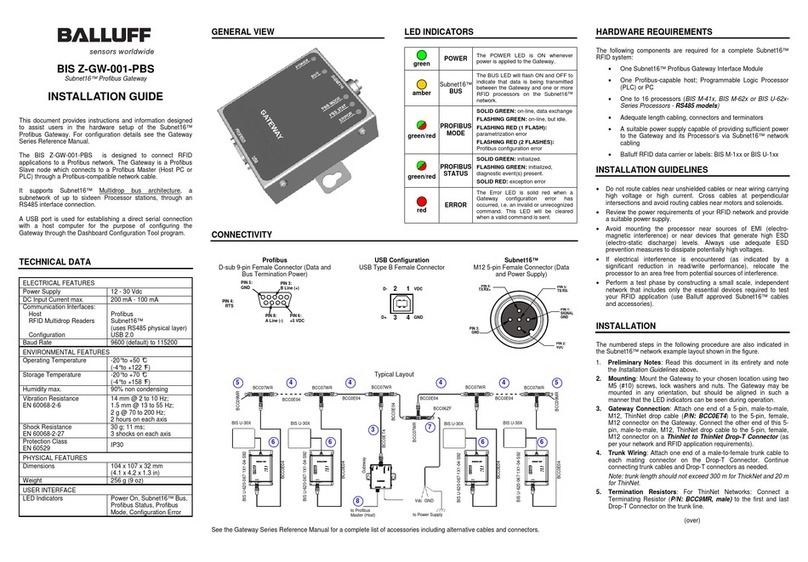
Balluff
Balluff Subnet16 BIS Z-GW-001-PBS installation guide
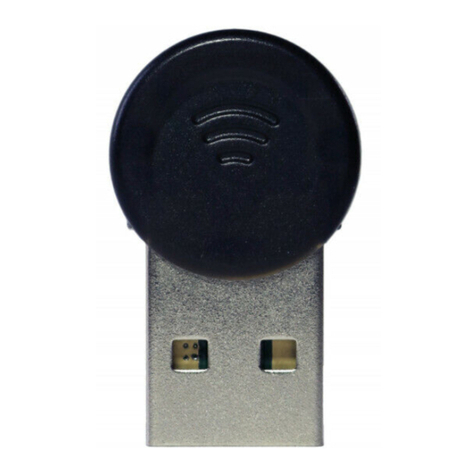
Popp
Popp ZB-Stick manual
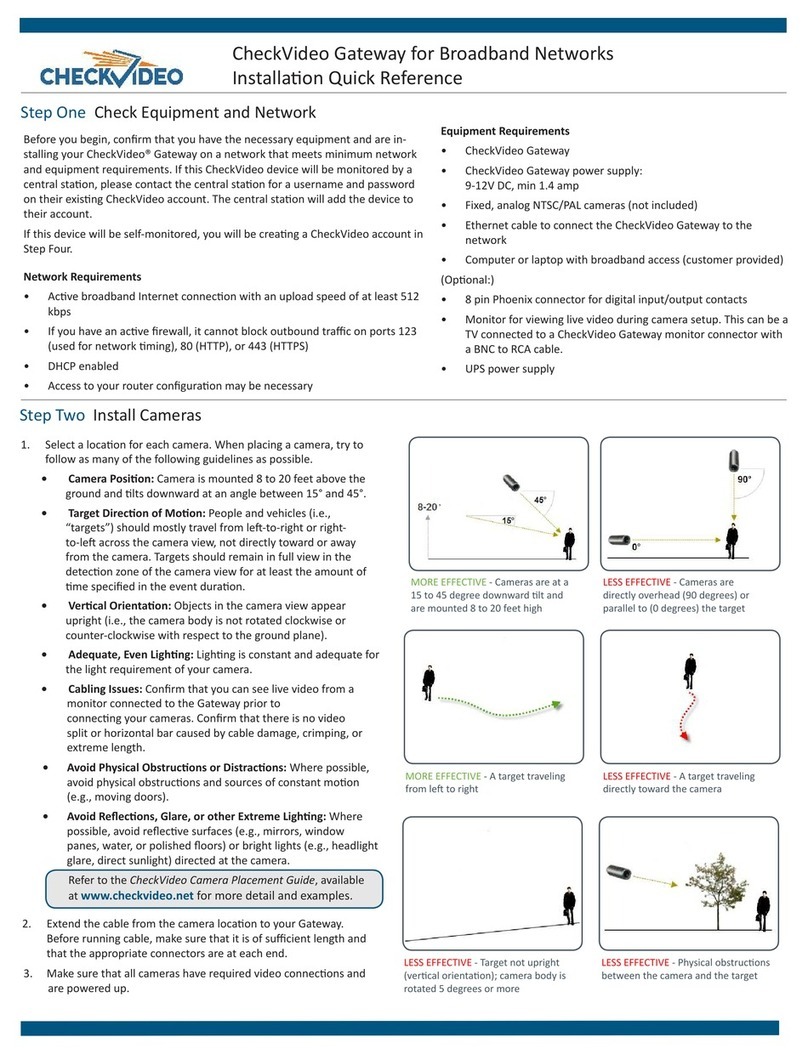
CheckVideo
CheckVideo CV400 Installation quick reference

DEUTSCHMANN AUTOMATION
DEUTSCHMANN AUTOMATION UNIGATE CL ProfibusDP instruction manual
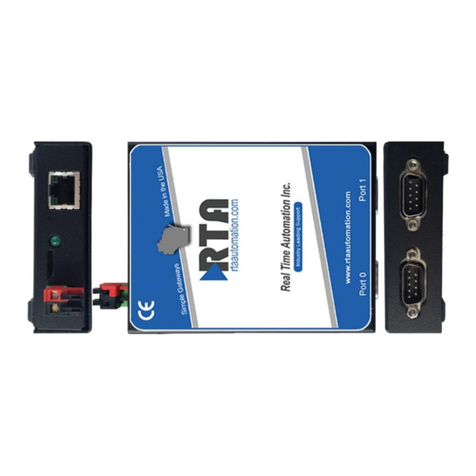
RTA
RTA 460ESTCP-N700 Product user guide
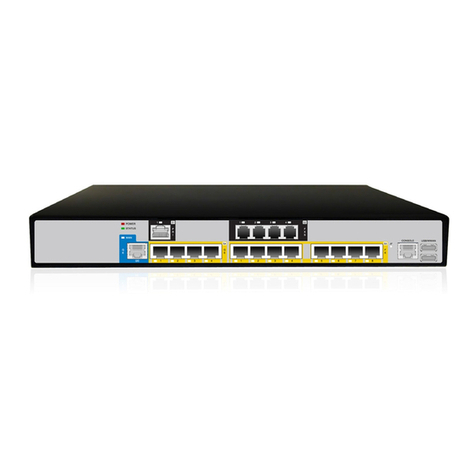
AudioCodes
AudioCodes Mediant 800 reference guide
